Join us as we take a closer look at 14 different species of birds of prey that you can spot in Northern Ireland.
The Northern Irish skies are a kaleidoscope of flapping wings and screeching calls as birds of prey dance on the wind. The region’s lush forests, rugged coastlines, and moorlands provide an idyllic backdrop for these sky-patrolling predators. Now, let’s dive talons first into the intriguing lives of five fierce feathered friends.
Let’s take a look at 14 different species of birds of prey that you can spot in Northern Ireland!
1. Barn Owl (Tyto alba)
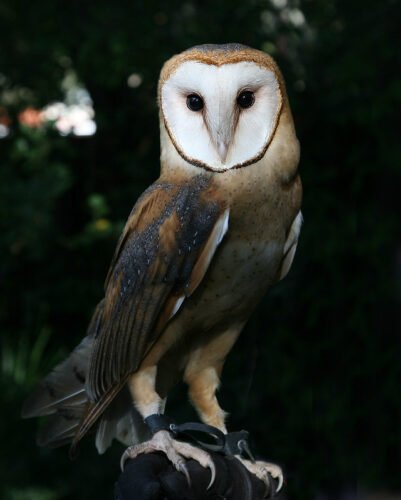
Prepare to be enchanted by the ghostly beauty of the Barn Owl. With its heart-shaped face, buff-colored upperparts, and pure white underparts, it is truly a sight to behold.
They prefer open countryside, often nesting in barns and other buildings. Mice and voles make up the majority of their diet. They silently fly low over fields, listening and looking for their prey before swooping down.
Pairs bond for life, and the male courts the female by presenting her with food and showing off his flight skills. Barn Owls are mostly residents in Northern Ireland. The Lower Lough Erne Islands or Oxford Island National Nature Reserve are splendid places to see them.
2. Eurasian Hobby (Falco subbuteo)
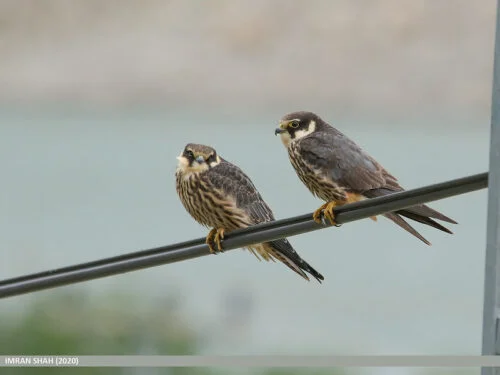
Zipping through the air with grace and agility, the Hobby is an aerial acrobat. Its slate-grey back, rufous underparts, and long, pointed wings give it a sleek and aerodynamic appearance.
Open countryside with patches of woodland is where they like to hang out.
These speedsters primarily feed on insects and small birds, which they catch in mid-air. During courtship, the male often passes food to the female while both are in flight – talk about a moving dining experience! Some Hobbies can be seen in Northern Ireland during the breeding season. Lough Neagh and the Belfast Harbour Reserve are prime spots for a chance to catch them in action.
3. Marsh Harrier (Circus aeruginosus)
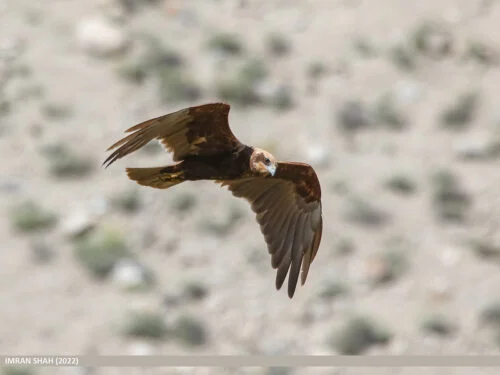
Last but not least, let’s glide through the reeds with the Marsh Harrier. This large raptor has a chocolate-brown plumage with golden-yellow highlights, and the males have a distinctive silver-grey patch on their wings.
As their name suggests, they prefer wetlands and marshes. They feed on birds, small mammals, and amphibians. They have a unique hunting style, flying low over reeds and marshes to flush out prey. Courtship displays include sky-dancing and food exchanges. They are relatively rare in Northern Ireland but keep an eye out around Lough Beg or Montiaghs Moss for a chance to see them.
4. Eurasian Sparrowhawk (Accipiter nisus)
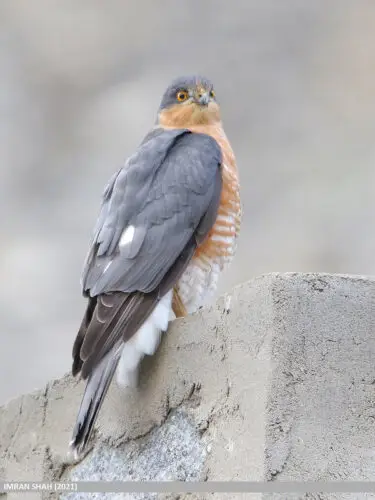
The Sparrowhawk is a dashing raptor, with males sporting blue-grey back and wings, and females flaunting brown plumage. These woodland specialists have short wings and long tails, perfect for darting through dense trees.
They primarily feed on small birds, employing stealth and agility to ambush their prey.
Being secretive, they are more often heard than seen, with a distinctive ‘kek-kek-kek’ call. Sparrowhawks build their nests in secluded spots within forests, and the males woo the females by showing off their aerial prowess.
They are generally residents in Northern Ireland. The dense woodlands of Montalto Estate or Rostrevor Oakwood are ideal places to spot these elusive hunters.
5. European Kestrel (Falco tinnunculus)
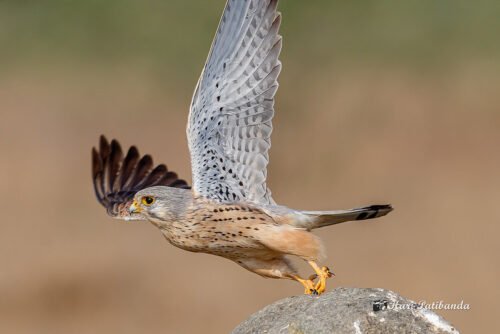
Here comes the Kestrel, a master of the hover and the heartthrob of many a birdwatcher. With rich brown plumage and a distinctive long tail, they’re not just elegant but aerodynamically efficient.
These graceful fliers prefer open habitats such as farmlands, heathlands, and grasslands. Kestrels have a taste for small mammals, particularly voles, and they employ a unique hunting technique of hovering mid-air to spot prey before diving down to grab it.
Courtship displays involve lots of aerial acrobatics and the passing of food from male to female in mid-air – talk about dinner with a view!
They are generally residents, so they stay in Northern Ireland year-round. The Ballynahone Bog and Divis and Black Mountain are excellent locales to spot these hovering heartthrobs.
6. Hen Harrier (Circus cyaneus)
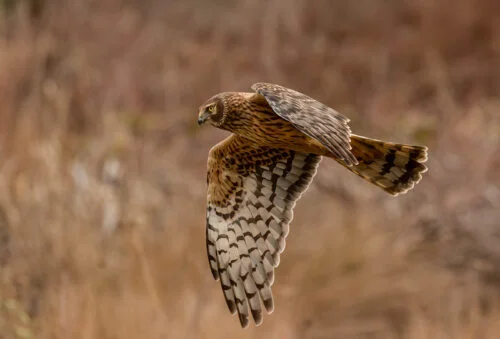
Oh, the enigmatic Hen Harrier, with males that appear ethereal in their ghostly grey attire and white underbellies, and females that exude a rustic charm in brown with white rumps.
These slender and agile raptors fancy open areas with low vegetation – think grasslands and moors. They are specially adept at munching on small mammals and birds, snatching their meals with precision in mid-flight or from the ground.
As for courtship, they’re daredevils – males perform a spectacular sky dance known as ‘sky-dancing’ to woo the females. Some Hen Harriers decide to vacation in warmer climates and migrate south for the winter, while others stay put.
Keep your eyes peeled in the blanket bogs and heathlands, such as the Antrim Plateau and Peatlands Park, as these are the places you are most likely to spot them.
7. Red Kite (Milvus milvus)
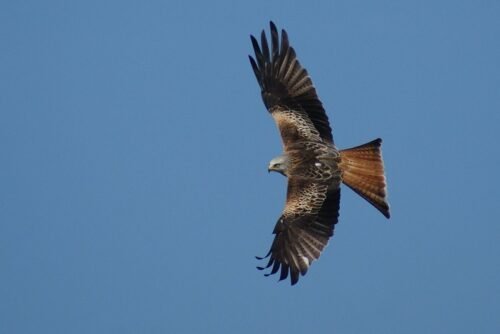
With a graceful forked tail and striking red and black plumage, the Red Kite is a sight to behold. These majestic raptors love open countryside, often interspersed with woodlands.
They are primarily scavengers and are often seen patrolling the skies in search of carrion, but they won’t say no to the occasional small mammal or bird. Their aerial displays are nothing short of ballet in the sky, complete with twists, turns, and dives.
Red Kites are sociable birds, often seen nesting in loose colonies. During courtship, pairs engage in dramatic aerial displays. Red Kites are residents in Northern Ireland and can be seen year-round. Castlewellan Forest Park is one of the best places to see these beautiful birds as they ride the thermals.
8. Long-Eared Owl (Asio otus)
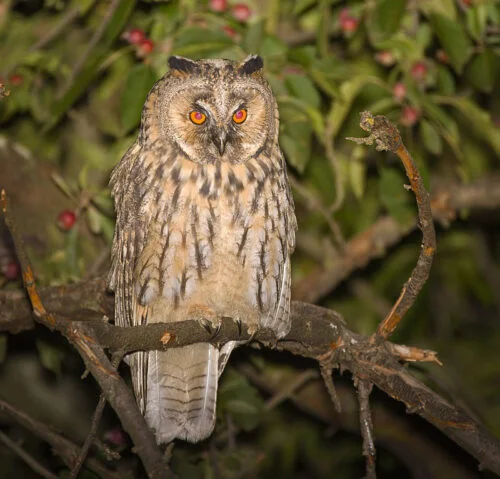
Let’s tune in to the mysterious and nocturnal world of the Long-Eared Owl. This elegant owl is dressed in dapper brown and buff feathers, with distinctive tufts that look like ears (but they’re not actual ears!).
Their preferred hangouts are dense woodlands, often near open grasslands or marshes.
These night prowlers have a taste for small mammals, especially voles. They silently fly low over fields, using their keen hearing to locate their next meal. Courtship involves plenty of hooting, wing clapping, and aerial displays. These owls tend to remain in Northern Ireland year-round. Pop over to the Peatlands Park or the Umbra Nature Reserve for a chance to spot them.
9. Common Buzzard (Buteo buteo)
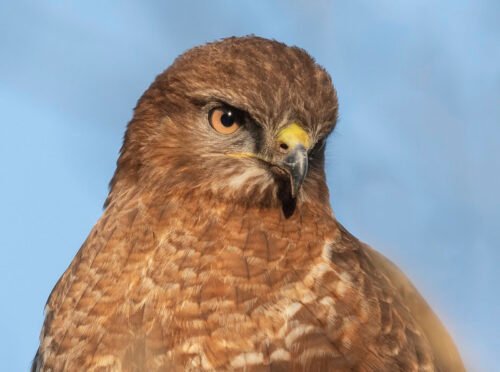
The Common Buzzard is quite the sight with a wingspan stretching up to a magnificent 1.3 meters, and it wears its brown plumage with cream-colored underparts as if draped in a royal cloak.
Those broad wings and short necks are their signature look, giving an impression of a bird that takes its workouts seriously. Although the Common Buzzard has a preference for woodlands, it’s not too particular and you can spot them hanging out in farmlands, scrublands, and even near highways. When it comes to their palate, they aren’t picky either, dining on anything from small mammals and birds to roadkill.
They’re masters of the sky, soaring high and swooping down in a surprise attack on their unsuspecting prey. Always up for a chat, these buzzards are known for their cat-like mewing calls.
They believe in true love, usually mating for life, and can be seen engaging in intricate sky dances during courtship. Most of them prefer to stay in Northern Ireland throughout the year, enjoying the comforts of home. You’ll likely spot them in forests and open fields, with Gosford Forest Park being one of their favored hangouts.
10. Peregrine Falcon (Falco peregrinus)
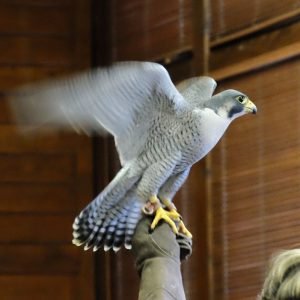
Let me introduce you to the fastest animal on Earth – the Peregrine Falcon. With a steely grey back, barred white underparts, and a dark hood, they’re the daredevils of the avian world.
These speedsters prefer tall structures like cliffs, skyscrapers, or even tall trees as their perching spots. With a taste for birds, they employ a spectacular stoop – a high-speed dive – to catch prey mid-air.
Besides being acrobatic hunters, Peregrines are also expressive and have various vocalizations for different occasions. They’re known to mate for life, and the male often engages in high-flying acrobatics to court the female.
Many Peregrines are residents, but some do migrate. To catch a glimpse of these flying ninjas, head to the Antrim Coast or Rathlin Island, where they often nest on cliffs.
11. Northern Goshawk (Accipiter gentilis)
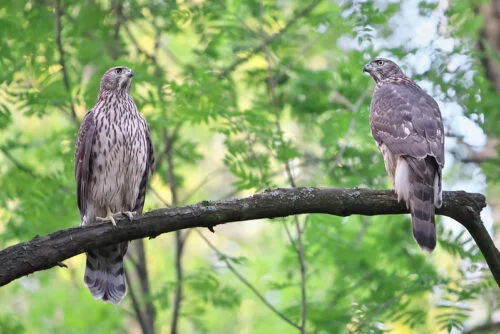
The Goshawk is like a raptor superhero with its robust build, steely grey plumage, and piercing red eyes. They favor dense forests with adjacent open spaces. Their diet is varied, including birds, mammals, and even other raptors.
They have an ambush-style of hunting, using their powerful wings to swiftly navigate through trees. Males display an exciting ‘sky-dance’ to impress females. They are relatively scarce in Northern Ireland, but you might catch a glimpse in large, dense woodlands like Tollymore Forest Park.
12. Merlin (Falco columbarius)
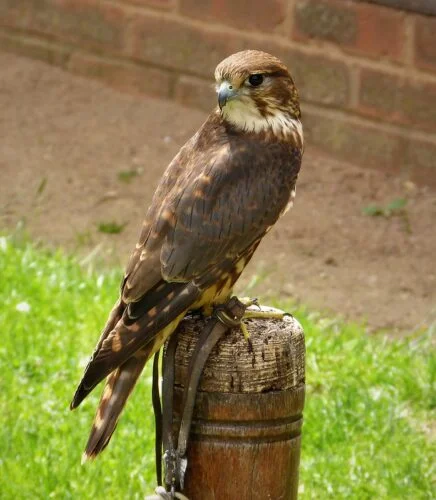
Hold on to your wizard hats because the Merlin is about to enchant you! This small, stocky falcon sports an attire of blue-grey upperparts for the males and brown for the females, with streaked underparts.
Don’t be fooled by its size, though – the Merlin is fiercely fast and agile.
They fancy wide-open spaces like moorlands and coasts. Small birds, particularly meadow pipits, are their favorite snacks, and they have a penchant for chasing their prey with rapid twists and turns.
When it comes to romance, the Merlin’s aerial displays involve fast, zig-zagging flights. Some decide to head south for the winter, while others stay in Northern Ireland. The stunning Antrim Hills or Murlough National Nature Reserve are prime spots to witness their magical flights.
13. White-tailed Eagle (Haliaeetus albicilla)
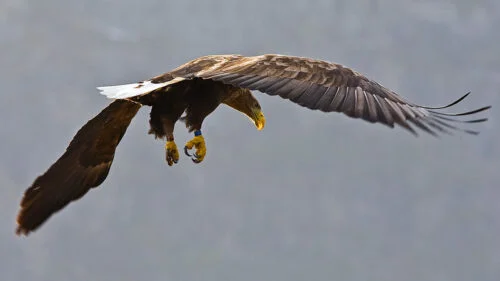
The White-tailed Eagle, also known as the sea eagle, is one of the largest birds of prey in Europe. With a broad wingspan, a pale head, and a white tail, they are simply awe-inspiring.
They love to be near water bodies and their diet primarily consists of fish, but they won’t say no to birds or carrion. With powerful wings, they can swoop down to catch fish with impeccable precision. Pairs are monogamous and can often be seen soaring together in circles. They’re not regulars in Northern Ireland, but occasionally they can be seen, especially around coastal areas like Strangford Lough.
14. Golden Eagle (Aquila chrysaetos)
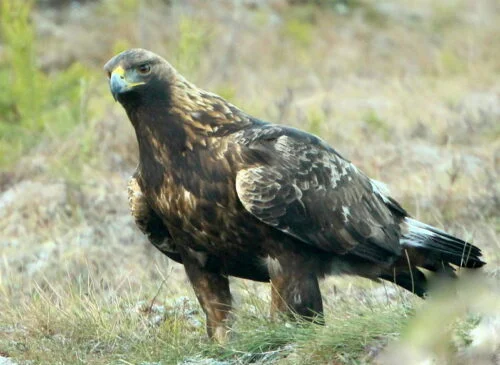
Ah, the majestic Golden Eagle, with its regal brown plumage and golden nape that looks like a crown, this one is true avian royalty. They prefer remote mountains and moorlands where they can rule their realm from high above.
They feast on a variety of prey such as rabbits, hares, and birds. Golden Eagles are known for their breathtaking soaring and plunging courtship displays. They are also highly territorial and are seen in pairs year-round in their territories. While not common in Northern Ireland, you might be lucky to spot one in the more remote, mountainous regions like the Sperrin Mountains.
